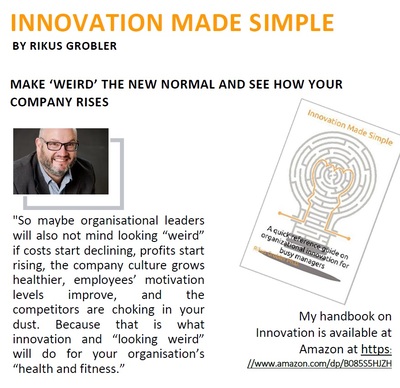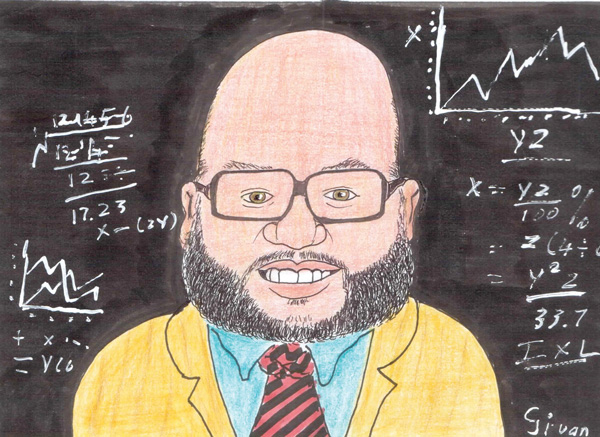
Matching the thinkers with the doers to make innovation happen

By Rikus Grobler, www.nis.co.na, [email protected]
I am on the topic of innovation implementation (execution). In the previous delivery, I discussed the matter of a “culture of execution.” In essence, it is a measure of how efficiently “things get done” in the organisation. I made the case that you get “doers” and “procrastinators” in every organisation. I was a bit harsh on the “procrastinators.” It might not be procrastination at all. Although, in my defence, sometimes it just really is procrastination.
It is a fact of life that some people are better at starting things, and some people are better at finishing things.
Taking myself as an example. I am a much better starter than a finisher. I like to think about things and coming up with new ideas. It is what I do best. I love the thrill of investigating a problem and coming up with a solution.
But once implementation starts, I lose interest and would much rather work on a new challenge than getting bored with the “predictability” of implementation. Sometimes a problem is complex, and the solution involves manoeuvring with ideas to get to the other side. Then the “thinking” part becomes part of the implementation process.
I also like to think about thinking. How can one become a more creative thinker, think faster, think better, think strategically, plan better, etc. Nothing wrong with it, it is just the default mode of how I operate. I think I morphed into a thinker because I am just so impractical, I am the best example of “all thumbs” ever.
On the other side of the spectrum are people who view thinking as hard work. They are always busy, and they get satisfaction from completing things and seeing how it works. The doers are the people who get things done.
A business needs both “Thinkers” and “Doers.” Jeffrey Phillips explains quite interestingly what will happen if a company consists of only one type. He hypothesizes that a firm composed entirely of Thinkers is basically a research lab or a think tank, while a firm composed entirely of Doers would eventually run itself, very efficiently, right out of business because it never changed or created new products or services.
After the realization of the Thinkers and Doers theory, I started investigating it and observing in organisations how things get done, or not done. On the academic side of things, it seems that scholars of business and management agree to the formation of the Thinker and Doer types, and the issue being debated now is how to find the balance between thinking and doing.
I came across an excellent article about this topic, and I will address it in the next delivery. My observation of what happens in practice in organisations is that the “system” is still pretty much wired to compensate people for “deliverables.” So, if you are not busy doing or delivering something, the impression is that you are not working. Meaning that if you are sitting and “thinking,” the perception is that you are not adding any value. This is a broad generalization of course, I am not saying this is the case in every organisation.
The fact of the matter is that we need both of these skill sets to be effective in any business. More specifically, if you want to make things happen concerning innovation, you need to match the Thinkers with the Doers.
It seems pretty straightforward, doesn’t it? Then why are not all organizations doing it? I think the reason mentioned above – thinking is not perceived as “work” – plays a significant role. Other issues that come into play, as pointed out by Jeffrey Phillips, are: 1) the appropriate proportion of each skill set in every product group or team. 2) The different approaches to compensating and motivating these very different people within the same teams. 3) How to bridge between them and make both kinds of people successful in an organisation.
For a start, I want to suggest that organisations identify who are the Thinkers and the Doers in the organisation – although I think that you will already have a very good idea. And then match Thinkers and Doers in teams responsible for innovation. I predict that the Thinkers will create some creative tension within the innovation process or product, but if matched with the Doers, the team will create real results.
Please share your findings with me if you establish this mix in one of your innovation teams.
Next Time
As I’ve mentioned, finding the right balance between thinking and doing is currently a topic of much interest, and I will share my findings on the matter in the next delivery.
I conclude with a beautiful quote from Ralph Waldo Emerson: “Thought is the blossom; language the bud; action the fruit behind it.”
Click on the thumbnail below to order Dr Grobler’s e-book on Innovation from Amazon.














































